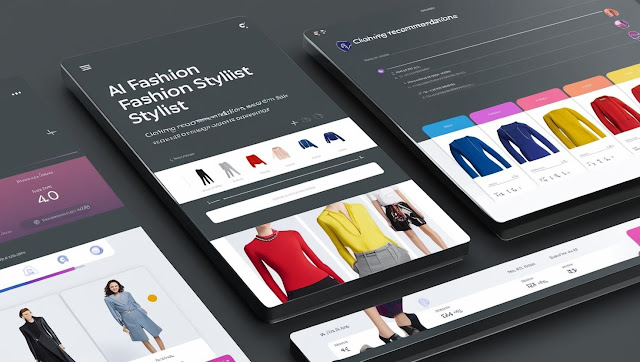AI-Powered Personal Styling & Virtual Try-Ons
How AI and AR Are Transforming the Future of Fashion Shopping
In the past, finding the perfect outfit often meant spending hours browsing through online stores or trying on clothes in cramped fitting rooms. But in 2025, fashion is undergoing a digital revolution—driven by artificial intelligence (AI) and augmented reality (AR). The result? Personalized fashion experiences that are more intuitive, enjoyable, and efficient than ever before.
👗 What Is AI-Powered Personal Styling?
AI-powered personal styling uses machine learning and data analytics to recommend clothing tailored specifically to an individual’s preferences, body type, budget, and even mood.
🔹 Key Capabilities:
- Analyzing previous purchases, likes, and browsing history
- Understanding body measurements and proportions
- Recommending color palettes, cuts, and combinations based on data
- Suggesting seasonal trends and pieces that match your lifestyle
💡 Example: Fashion platforms like Vue.ai and Fashable use AI to create a “style fingerprint” for every shopper—delivering hyper-personalized outfit suggestions in seconds.
🖼️ Virtual Try-Ons: Try Before You Buy—Digitally
With AR, shoppers can now see how clothes look on them without ever touching the fabric. Using your phone camera or a smart mirror, you can visualize how a jacket fits, how a dress flows, or how sunglasses frame your face in real time.
🔸 Virtual Try-On Technologies Include:
- AR Smart Mirrors in retail stores (e.g., MemoMi, FXMirror)
- Mobile try-on apps using facial and body recognition
- 3D clothing overlays for digital outfit testing
👓 You can also try makeup, accessories, and even shoes before adding them to your cart—making returns less likely and increasing shopping satisfaction.
🤖 Behind the Tech: How It Works
- Data Input: Users enter size, preferences, past purchases, or simply log in to allow the system to analyze historical behavior.
- AI Processing: The AI model uses recommendation algorithms (similar to Netflix or Spotify) to match user data with current fashion trends.
- AR Visualization: Through your phone or AR-enabled mirror, you see a virtual version of yourself wearing the outfit—styled, fitted, and animated in real time.
🌍 Why It’s a Game-Changer
No more guessing sizes or struggling with style choices.
✔ Boosts Confidence
Shoppers can try dozens of looks quickly, helping them feel good about what they buy.
✔ Reduces Returns
When shoppers know exactly what they’re getting, returns (and carbon emissions) drop significantly.
✔ Drives Sustainability
Less waste from poorly fitting or unwanted clothes means a smaller environmental footprint.
🛒 Who’s Using It?
- Zara and H&M have tested AR fitting rooms.
- L’Oréal uses AR for virtual makeup try-ons.
- Nike Fit scans feet with AI for perfect sneaker sizing.
- Snapchat & Instagram have introduced virtual fashion try-ons via filters and AR lenses.
🔮 The Future of AI Fashion Shopping
In the near future, we’ll also see:
- Digital fashion wardrobes synced to smart devices
- Haptic feedback clothing previews
- Virtual influencers modeling try-on outfits before launch
🧠 Final Thought
As AI and AR continue evolving, shopping is no longer about clicking “add to cart”—it’s about discovering a style that’s uniquely yours. Personalized, sustainable, and futuristic, AI-powered fashion is here to stay.







